Report #12 about Roberta Books and Marysia Galbraith’s trip to meet Polish partners in preparation for the ADJCP‘s memorial visit to central Poland.
Brześć Kujawski, September 14
Our visit to Brześć Kujawski illustrates the importance of local institutions and people committed to the restoration of Jewish memory. My first visit to this town in 2015 left me profoundly unsettled. All I could find of the prewar Jewish cemetery was an unkempt field scarred by a crumbling pool. No sign anywhere acknowledged the vibrant prewar Jewish community, which numbered between 630 and 990 people in the first decades of the 20th century. I felt the absence personally because my grandmother was part of that overlooked community.
Hence my surprise when in 2020, Anna Szczepaniak, who works at the Brześć Center of Culture and History: Wahadło, sent an enthusiastic response to my blog post about the ADJCP plans to organize a memorial trip for descendants. Anna said she welcomes the ADJCP to Brześć Kujawski and over the course of the following year, she and the vice-director of the center, Sylwia Czerwińska-Modrzejewska shared their plans for a memorial plaque at the site of the former ghetto as well as cultural programs about Poland’s Jewish community. They wanted to coordinate events to occur during our memorial trip. Sadly, COVID delayed our visit, but the Center of Culture and History, with the support of Mayor Tomasz Chymkowski, has gone ahead with substantive efforts to restore Jewish memory in their town.
As you enter Brześć Kujawski, a 12-kilometer drive from Włocławek, the brand new Center building looms up on the right side of the road. Roberta and I were greeted by Anna, who quickly made clear that they had prepared for our visit. She gave us a thick folder filled with copies of historical documents they have collected: photos, maps, and sketches of the town; artist Maya Gordon’s plans for a memorial monument in the Jewish cemetery; and archival records about the cemetery and official Jewish Community matters.
They told us about Mikołaj Grynberg, a Polish photographer and child of Holocaust survivors, who has published two photo albums and various books and articles, including stories of children of survivors. Grynberg was scheduled to come to Brześć Kujawski on October 15 to show his new film “Dowód Tożsamości” (“Identity Card”; can also mean “Proof of Identity”). According to a post on the Facebook page “Szlakiem Żydów w Brześćiu Kujawskim” (“Trail of the Jews from Brzesc Kujawski” ) the film explores:
how the memory of the Holocaust evolves and what role it plays in the minds of today’s twenty-year-olds. The interviews show a wide panorama of attitudes and experiences – the interviewees come from both large cities and the Polish provinces. The film is an attempt to show the specificity of being a Polish Jew, often incomprehensible to people outside of this circle.
We toured the new multimedia exhibition, located on two stories of the Center, which focuses on the history of Breść Kujawski from prehistoric times through the contemporary period. Reminiscent of the Polin Museum in Warsaw, it emphasizes active engagement with historical information rather than artifacts, although it includes some impressive prehistoric pottery and other items. The exhibition integrates the history of the Jewish community. For instance, one room reproduces a town street during the period between the world wars, complete with reproductions of signs for businesses, some which had Jewish proprietors.
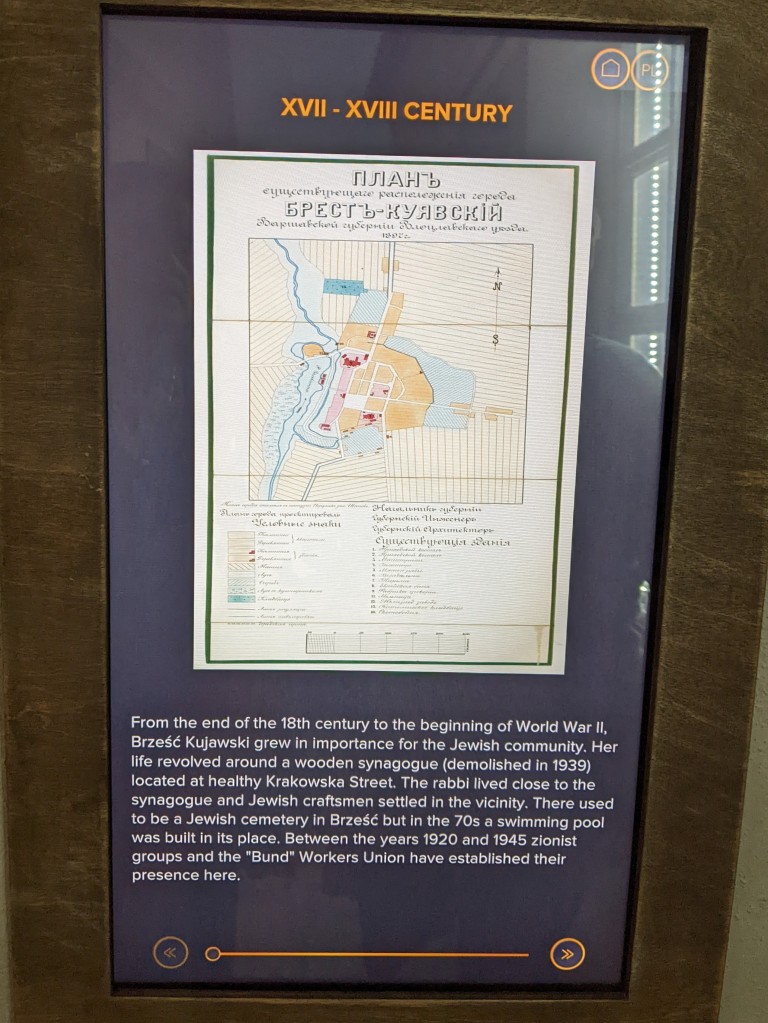
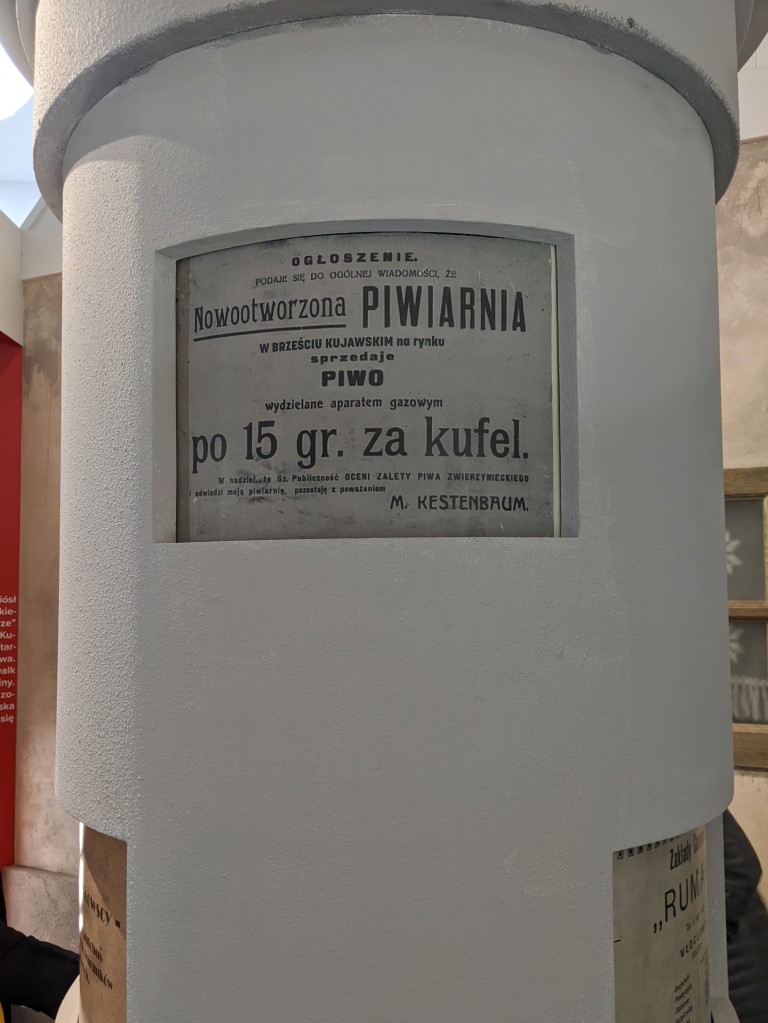
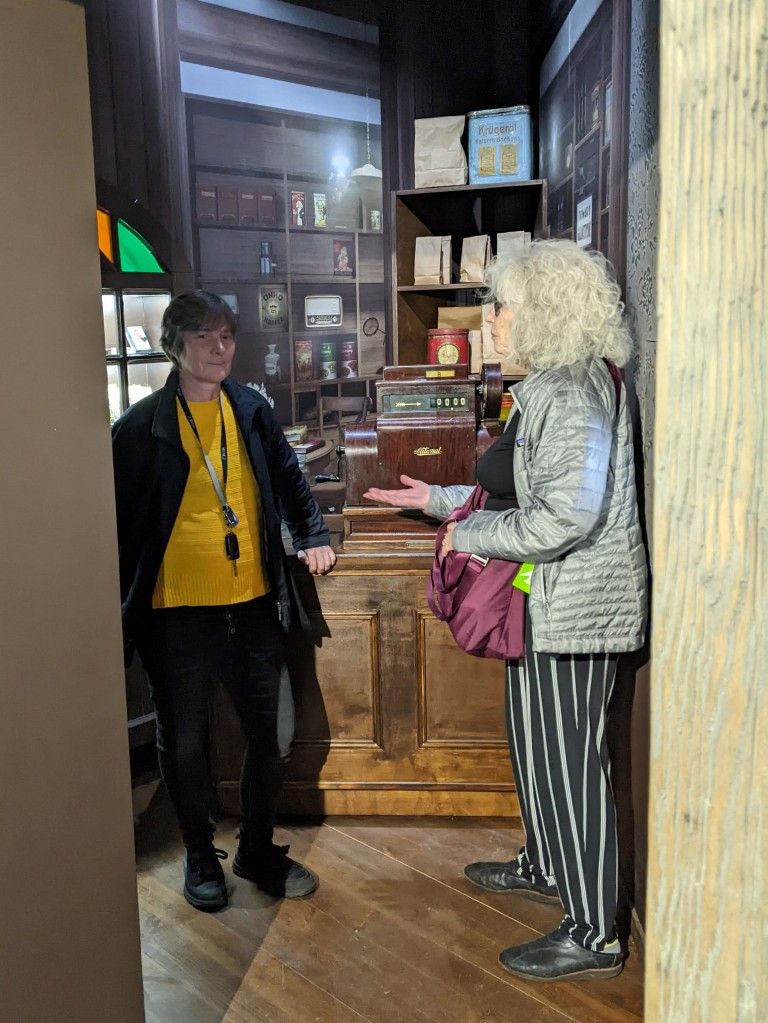
We drove with Center Director Agata Kubajka and Anna to the Jewish cemetery at the outskirts of town. Anna couldn’t get the key to open the locked gate so we stepped over the fallen chain-link fence and walked through the knee-high grass to the edge of the empty, blue-painted pool.
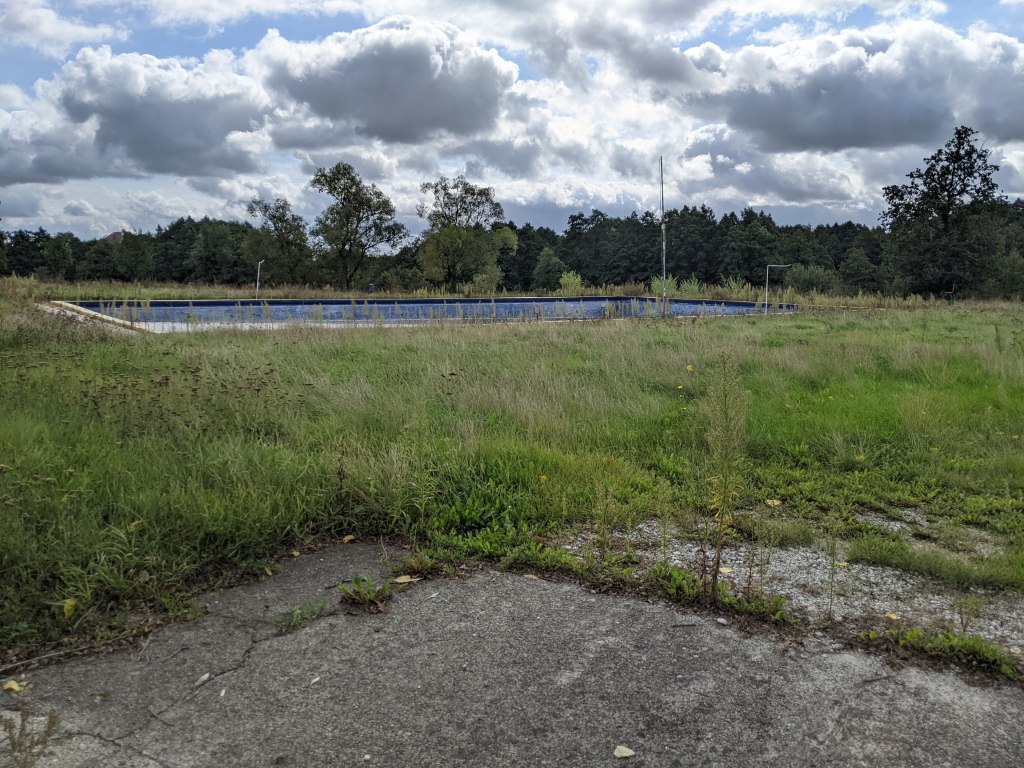
Last year, the swimming pool was closed and they are seeking funding to transform it into a memorial monument. Recognizing that some people might protest the loss of the pool, they found a location for a new one; the old pool was built in the 1970s so it needed to be replaced anyway. The town wants to transform the space into a park with pathways and benches. Maya Gordon’s design for the memorial would put a circular medallion at the bottom of the former pool depicting a tree with broken branches, meant to represent mourning and destroyed lives, as well as echoing the broken tree motif commonly found on matzevot. In her imagining, water will naturally fill the basin and cover the medallion, representing spiritual cleansing and rebirth. The pool basin will become a part of the memorial and avoid the further disruption that would result from removing it. Maya Gordon lives and works in Amsterdam, Tel Aviv, and Warsaw. She was born in Poland but moved to Israel around age ten. She studied art in Jerusalem and in The Netherlands.
We drove back into town to see the former site of the synagogue (now an empty lot) and the square where Jews were gathered for deportation to the death camp at Chełmno nad Nerem. They have plans to place historical markers in each of these places.
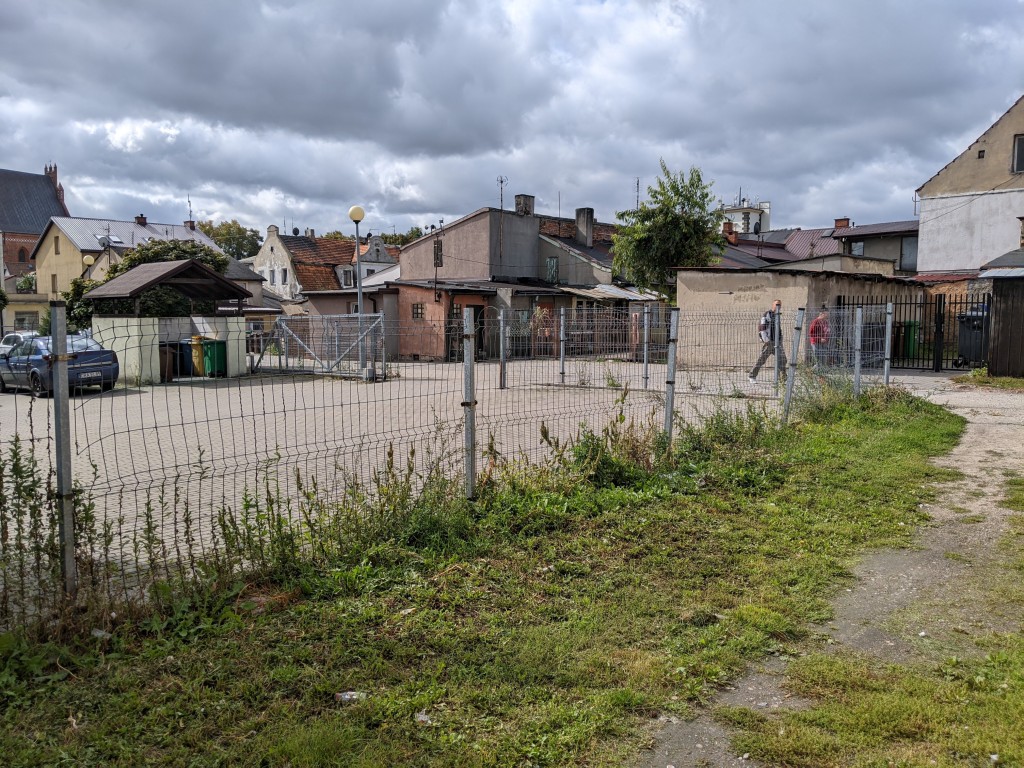
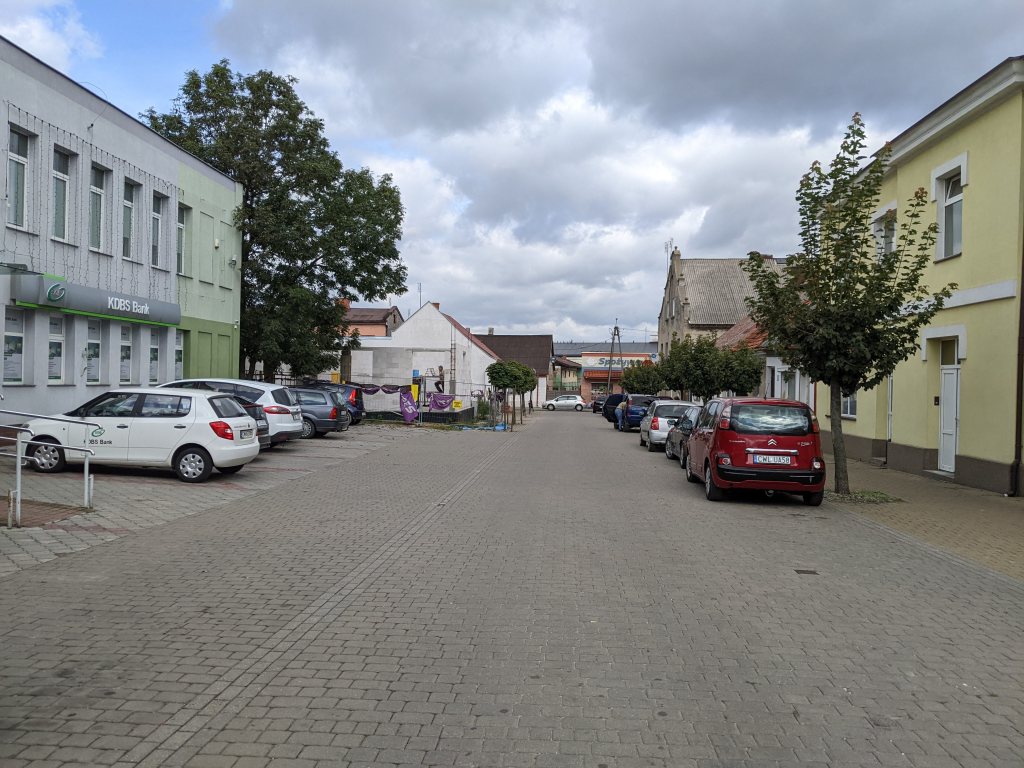
Down the street from the synagogue site, Anna, popped into a doorway to ask an elderly resident if she could show us the basement of the building where they believe there was a ritual bath. The woman grabbed her flashlight and led us down a rickety wooden staircase into a basement with vaulted ceilings made of brick and stone. There was some debate about how the space could have been configured and what the source of the water might have been. Even if it wasn’t the ritual bath, the basement clearly dates back to the 19th century (I would guess even older). It probably saw many uses during its existence.
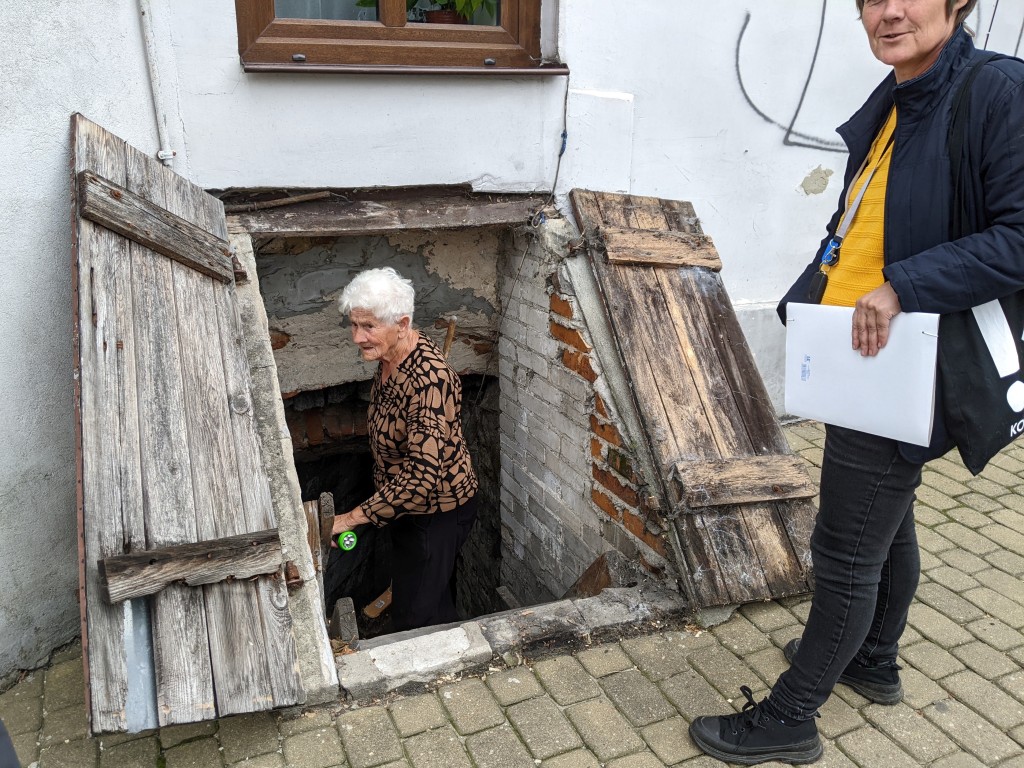
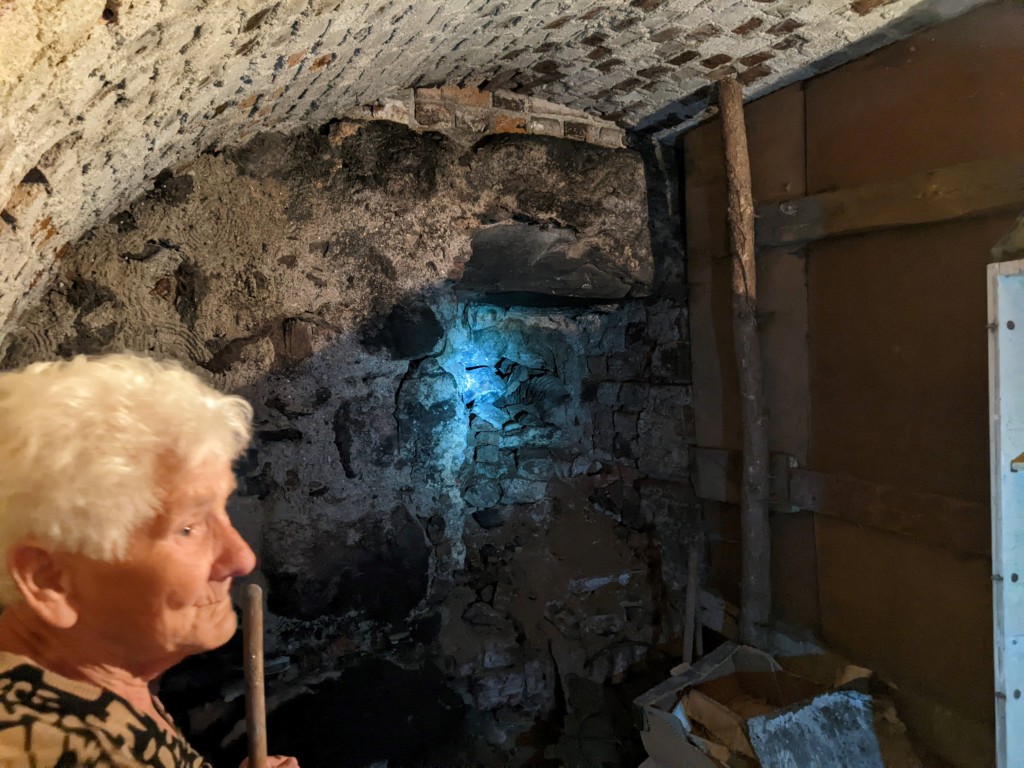
We returned to the Center of Culture and History, to the restaurant on the ground floor, where we joined Mayor Tomasz Chymkowski, his assistant Karolina Filipiak, Director of the Center Agata Kubajka, and Vice-director Sylwia Czerwińska-Modrzejewska for lunch.
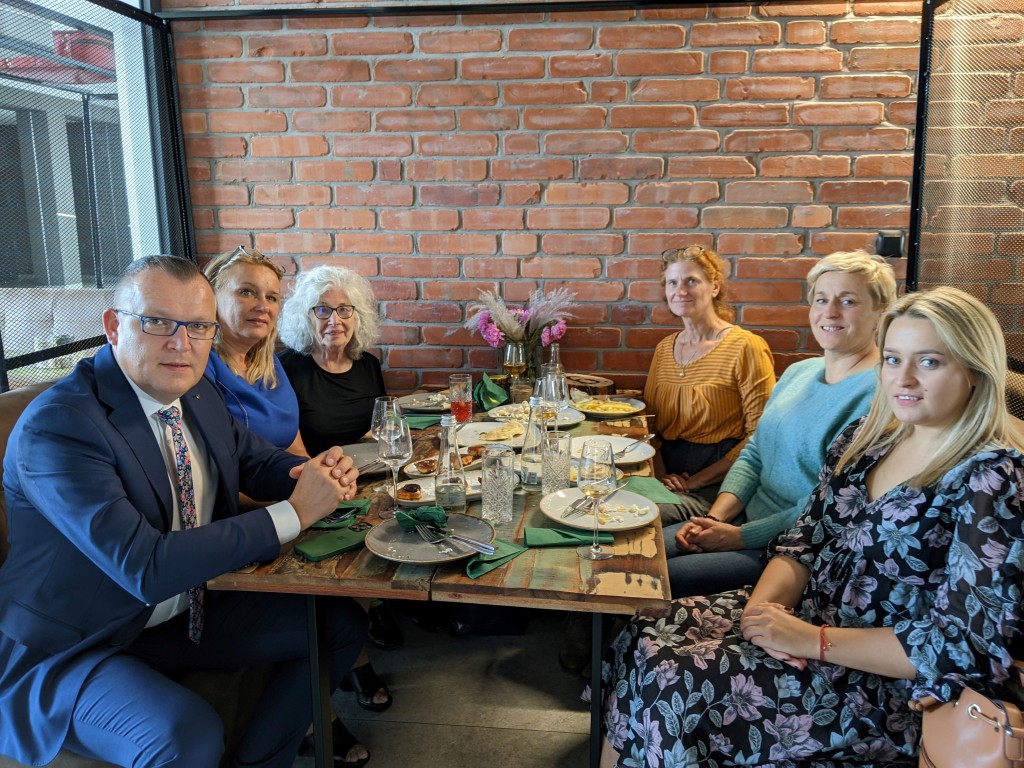
We had a spirited, wide-ranging discussion over our meal. Sylwia made sure we tried some regional specialties, including kluski (homemade noodles) with farmer’s cheese and bacon. Mayor Chymkowski explained why Brześć Kujawski is in better economic shape than many neighboring towns. They built an industrial park before other places got the idea. Manufacturers of items such as clothing, auto parts, and bicycles provide jobs for town residents and commuters. Chymkowski said the town has the financial means to invest in preserving the town’s history. This includes renovating the town center and marking historical places, including those associated with Jewish residents. He described the plans for the Jewish cemetery, and explained the pool had been built by communists. He said there was no regional place of remembrance. That is the function he wants the renovated cemetery to serve.

What a fascinating experience. It is uplifting to know that local townspeople, including the mayor are involved in remembrance of the Jewish residents. Your trip seemed so productive and meaningful which is great.
LikeLike
All in all we met with 6 mayors. As you have seen in Tarnów, support of the mayor really facilitates meaningful work
LikeLike